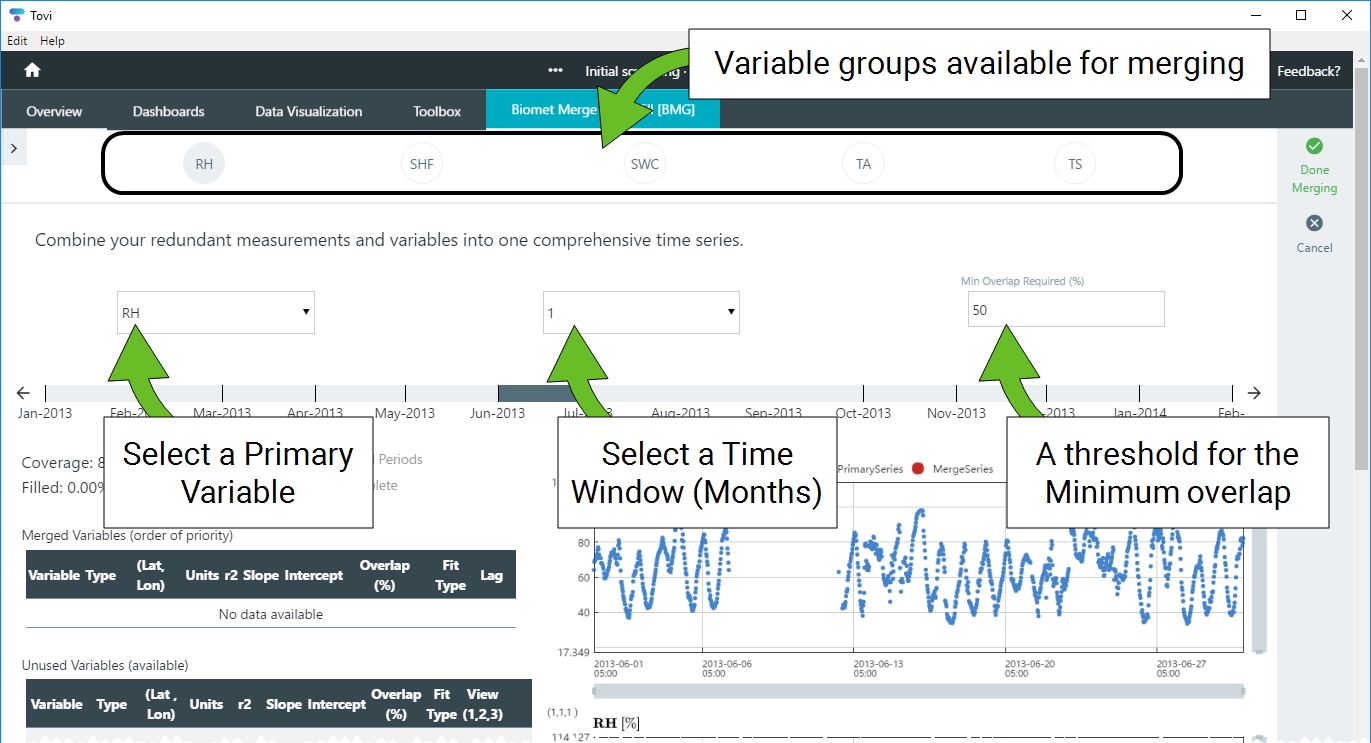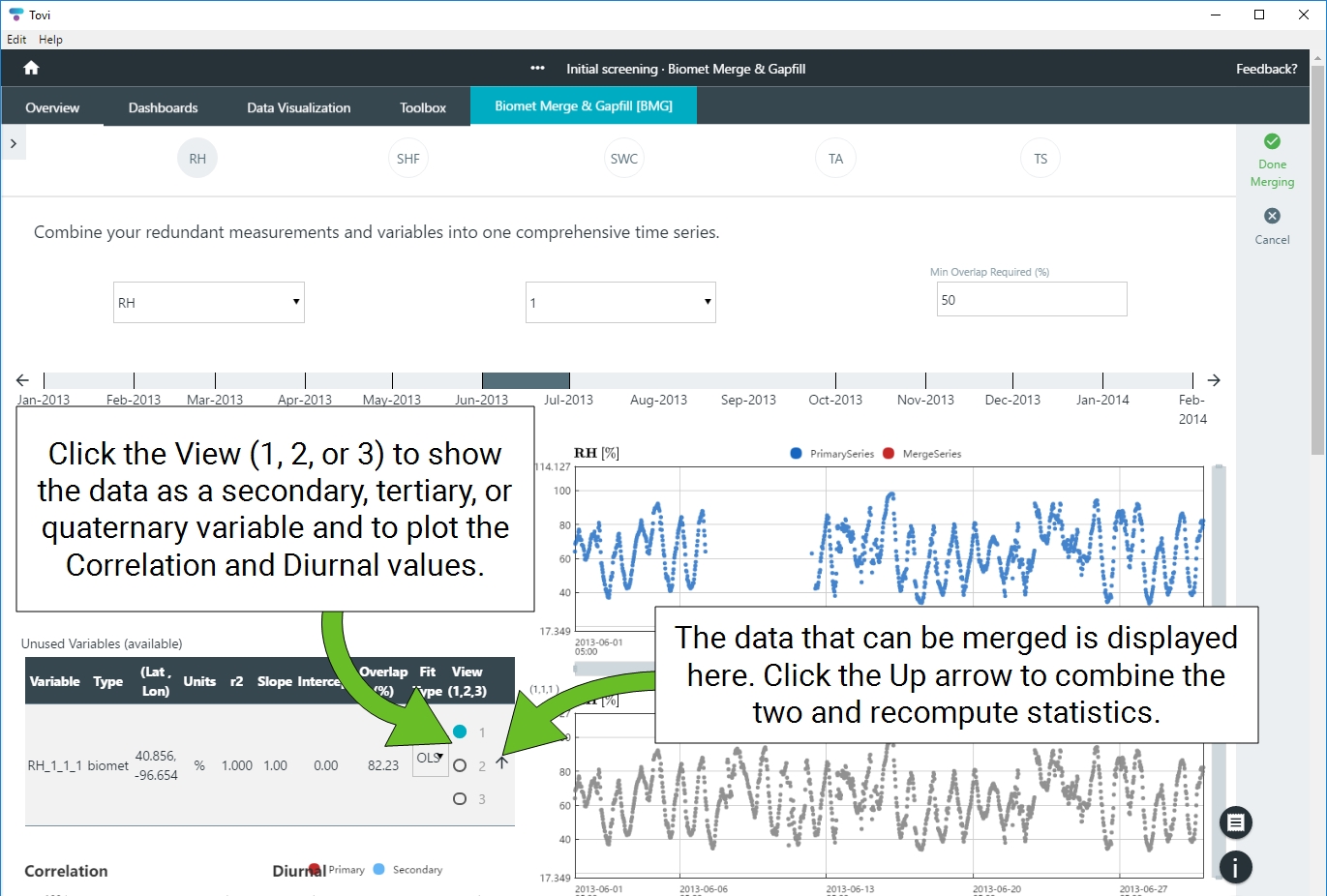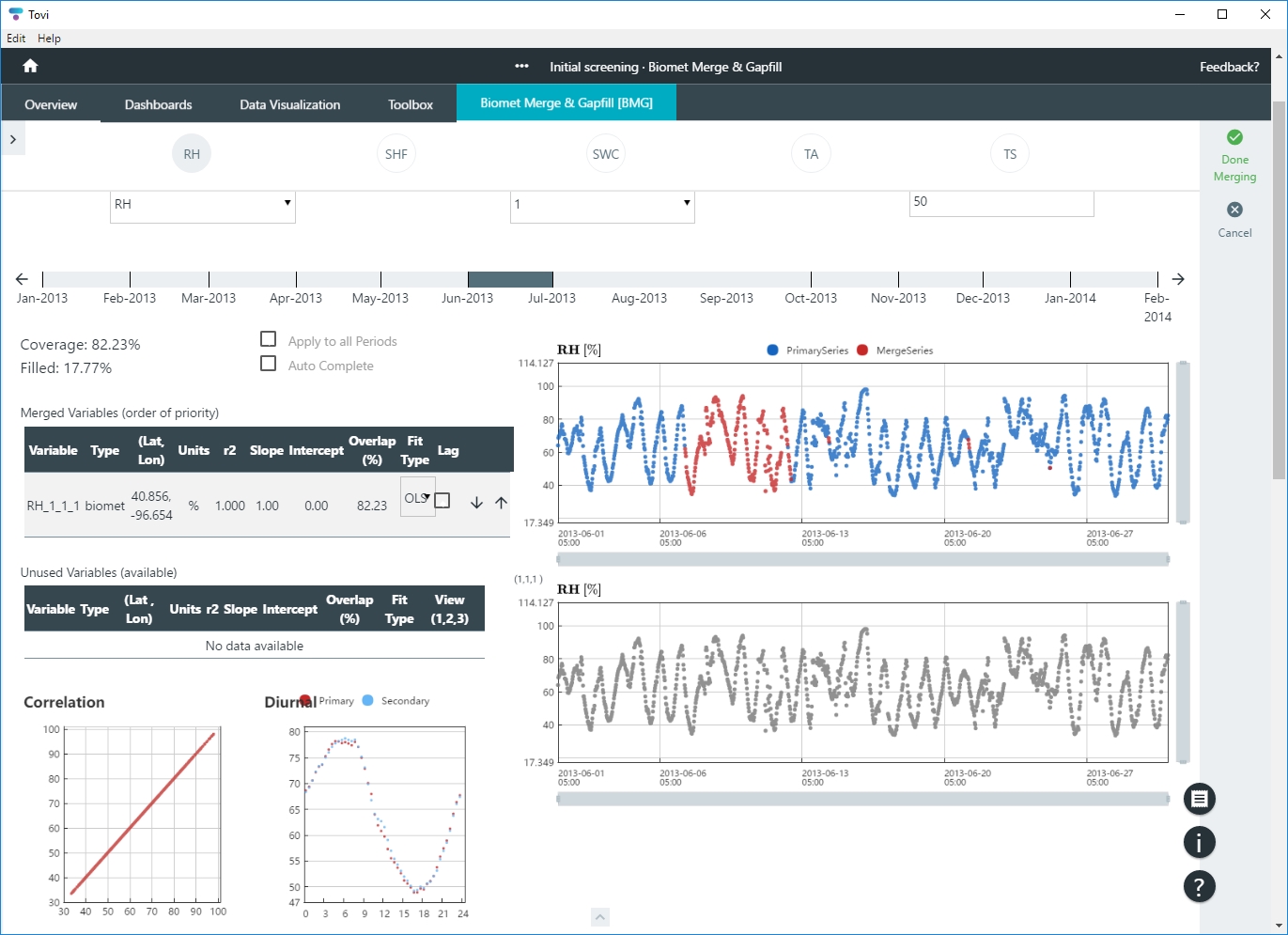The Biomet Merge & Gap Fill tool allows you to combine replicate variables into one new variable. For example, one site may have three soil heat flux measurements (SHF_1_1_1, SHF_2_1_1, SHF_3_1_1.) The tool can be used to combine those data streams into one merged or gap-filled data stream with a more complete set of data, creating a new combined variable.
In addition, you can evaluate the data to determine its suitability for merging. Tovi will compute parameters (r2, slope, overlap and coverage) to help you make the decisions. The basic process of the merging is described below.
- In Overview > Analysis History, select the node to modify and click Toolbox > Biomet Merge & Gap Fill (BMG).
- Set up the gap filling procedure.
- Choose a Primary Variable, set the Time Window, and set the Minimum Overlap Required (%). The Minimum Overlap Required is a threshold the describes the number of overlapping variables in the primary variable and the variable to be merged. If there is no overlap, Tovi is unable to compute statistics on the two variables. The default setting of 50% is a good starting place, but adjust this to suit your needs. If there are no gaps, select another time window.

- Check the statistics between the primary variable and other variables.
- Tovi will calculate statistics on the two parameters (lag, r2, slope, and intercept). These should inform your decision about merging.
- Choose a secondary variable for merging.

- You can view statistics on the two (or more) variables.

- You have some options: Apply to all Periods, Auto Complete, or Lag.
- Proceed through all of the meteorological parameters presented here and merge as needed.
- When you're satisfied with the work, click Done Merging.
- You'll be prompted to name the exercise (Name Tag) and click Continue. Tovi will indicate the progress by adding a BMG node to the project.

